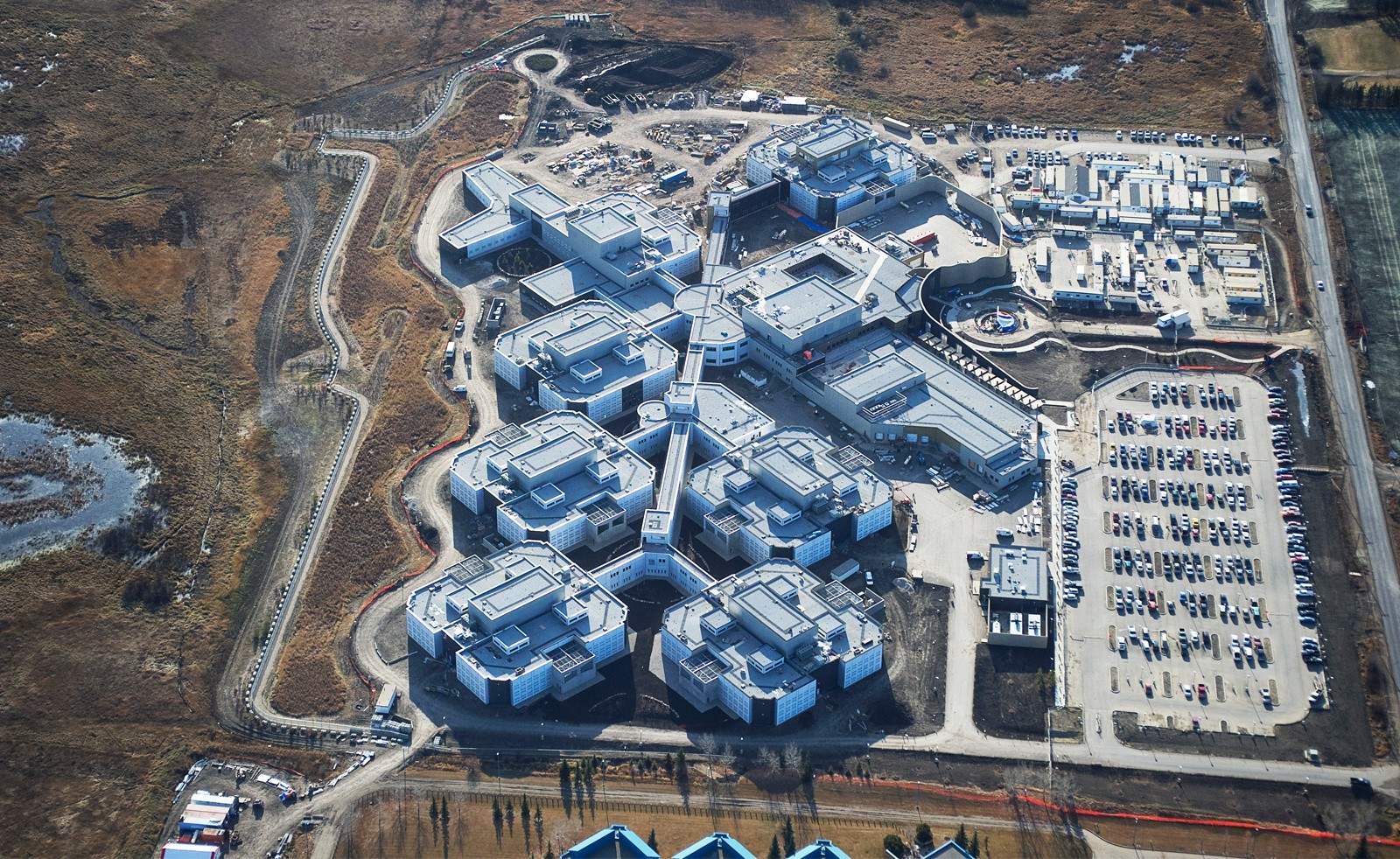No
Quality of Life in Canada
Canada is one of the safest, most comfortable countries on earth, with citizens who enjoy generally contented lives free from substantial hardship. While any country’s standard of living will obviously differ quite a bit from person to person, a look at various social metrics highlight the many things Canadians have to be thankful for — as well as where improvements still need to be made.
See also the chapter on Social Issues in Canada, for information on current Canadian government policy regarding controversial questions involving sex, gender, and individual rights.
Health and Safety in Canada
Canadians are a generally healthy people and the country does not have any widespread problems with dangerous or infectious diseases. The average Canadian life expectancy is in the early 80s, for both genders. The leading cause of death for both sexes is cancer, followed by heart disease, which together represent about half of all natural deaths in Canada. Most of the other half die from a variety of other relatively common diseases and afflictions that tend to strike humans late in life, including diseases of the respiratory system, strokes, diabetes, Alzheimer’s disease, and pneumonia.
Accidents of various forms, including car accidents or on-the-job fatalities, are generally responsible for around five per cent of all Canadian deaths, with suicides representing around one per cent, though both are vastly more common causes of death for Canadians under 40. A growing number of elderly Canadians choose to end their lives with medically-assisted suicide following its legalization in 2016.
Less than half of one per cent of Canadians suffer from HIV/AIDS, mostly homosexual men, and those who frequently use injection drugs — particularly men in prison. Aboriginal Canadians also have a much higher rate of infection compared to Canadians of other races. For reasons that aren’t entirely understood, Canada has the highest rate of Multiple Sclerosis (MS) on earth; the nerve disease affects about 290 out of every 100,000 people.
Housing in Canada
Canada’s home ownership rate is around 66 per cent. Among non-home owners, the majority of Canadians rent a leased house, apartment, or suite from a landlord or property corporation.
Canadians generally live with their parents until their 20s, and then rent until their 30s, when they mortgage a house or apartment, usually with their spouse. Many Canadians are increasingly choosing to rent for much longer periods of life than past generations, however. Unaffordable homes are a growing concern in many of Canada’s big cities, where real estate prices are some of the highest in the world. Expensive mortgages contribute heavily to the high rates of indebtedness of Canadians (see below).
The Government of Canada estimates that between 150,000 to 300,000 Canadians “experience homelessness” in a given year, meaning they temporarily lack a permanent place to live. A network of homeless shelters, operated by government and charities, provide temporary places to stay for the majority of homeless Canadians. Most of Canada’s homeless population consists of middle-aged men, with aboriginal Canadians dramatically overrepresented.
Personal Finances of Canadians
Canadians enjoy a very high standard of living due to the strength of the Canadian economy. The median annual family income in Canada (meaning there exists an equal number of Canadian families making both more and less) was estimated at $78,870 in 2014.
Personal debt is a significant problem in Canada, and by some estimates Canadians are the most personally-indebted people in the western world. The average Canadian’s debt-to-income ratio is estimated at around 170 per cent. That said, the majority of individually-held Canadian debt takes the form of property mortgages. This is especially true for Canadians who live in the country’s large cities, where real estate is extremely expensive. High housing prices ensure that even heavily-indebted Canadians generally have a stable debt-to-asset balance, however.
Poverty and Economic Inequality in Canada
The Government of Canada does not have an official designation of poverty, which means it can be difficult to firmly state the number of “poor” Canadians. Statistics Canada classifies a Canadian family as “low income” if they earn less than half the median Canadian family income (see above), while the low income cut-off (LICO) is a more precise figure used to determine if a person’s income will not be enough to survive on when considered in the context of that person’s family size, area of the country they live, and so on. Combining these two measurements, about 13 per cent of Canadians were classified as being “low income” in 2014.
Among western democracies, Canada has generally high levels of economic inequality, with the gap between Canada’s rich and poor having steadily increased since the 1990s.
The standard measure of economic inequality is the so-called Gini Coefficient, which ranks societies from a minimum of zero to a maximum of 100. According to the World Bank, Canada’s inequality score sits around 33, which is worse than most of western Europe but better than the United States and Great Britain. According to Statistics Canada, the richest fifth of the Canadian population holds close to 50 per cent of the wealth of all Canadian families, with the wealthiest one per cent holding close to 10 per cent of all wealth. That said, Canada is also a country with high rates of economic mobility and the vast majority of poor Canadians will experience an increase in personal wealth during their lifetimes.

The Edmonton Remand Centre, Canada's largest prison, with a capacity of 1,952.
Alberta Justice
Crime and Punishment in Canada
Canada’s crime rate has been in steady decline after reaching a peak in the 1990s, though it is still higher than in the 1960s, when the modern crime rate first began to rise. Over four-fifths of crimes committed in Canada are non-violent, with the most common being small thefts, home robberies, traffic crimes, public “mischief,” and crimes involving the distribution or possession of banned drugs. The most common violent offenses are assaults, beatings, and violent robberies. Canada’s murder rate is generally around 600 per year.
The total number of Canadians in prison is around 40,000, or less than one-half of one percent of the Canadian population. Close to 99 per cent of Canadian prisoners (also known as inmates or offenders) are male, and the small population of female prisoners are sent to special women’s prisons. Canada’s prisons are generally highly-rated by human rights groups, though the controversial practice of solitary confinement is still practiced and rates of HIV and Hepatitis C infection among Canadian prisoners are well above national averages. Aboriginal and black Canadians are disproportionately overrepresented in Canada’s prison population, as are people with mental illnesses.
Pollution in Canada
Canada sits in the top-tier of nations as far as most environmental quality metrics are concerned. The World Health Organization (WHO) gives Canada one of the world’s highest rankings for air quality, while a 2016 study from the Yale Center for Environmental Law & Policy gave Canada a comprehensive 85/100 environmental quality score based on a host of variables, including air and water quality, putting the country in 25th place overall (out of 180 countries studied).
Canada contributes around two per cent of the world’s total greenhouse gas emissions (GHG), a number that, while small, is far out of proportion with Canada’s tiny share of the global population. This puts Canada as one of the world’s worst GHC emitters on a per capita basis. Reducing emissions caused by the extraction of Canadian oil in the Canadian prairies, particularly bitumen (or “tar sands“), as well as decreasing use of petroleum-powered automobiles is the focus of most Canadian environmental activism and public policy, which is increasingly focused on Canada’s role as a contributor to man-made climate change.
As Canada is a large and mostly uninhabited country, the risk of substantial human-caused environmental degradation is generally low, with worries centering mostly around the creation of new resource-extracting projects, such as mines, power plants, dams, or oil and natural gas wells or pipelines in previously untouched parts of the country. Many of Canada’s worst environmental disasters have come from the accidental destruction of a resource-extraction site or transportation system.
Women’s Rights in Canada
Canadians of both genders are declared legally equal under the Canadian constitution, and are protected from gender discrimination by government and private sector businesses by various provincial and federal human rights laws. Federal laws relating to marriage, divorce, and military service are all officially gender-neutral.
By a margin of less than 10 per cent, Canadian women are slightly less likely than men to work, though the differences become larger when the comparison involves full-time work, or the total number of hours worked per week. Canadian women continue to be dramatically overrepresented in certain historically and stereotypically female professions, such as teaching, nursing, and waitressing, and dramatically underrepresented in stereotypically male jobs, including construction, trades, and jobs involving natural resources. As many stereotypically female jobs pay less than male ones, complaints about a female “pay gap” remain common. Under the terms of Canada’s federal employment insurance program, a woman is entitled to take up to 12 months off work to care for her child during and after her pregnancy (“maternity leave“), and it is against the law for employers to discriminate against or punish a female employee on the basis of being pregnant.
When asked by pollsters, a large majority of Canadian women will usually say the two genders are not yet fully equal in Canada, and blame entrenched sexist attitudes for holding back women in various fields of life, particularly important leadership positions in business and politics, where they may not be considered as trustworthy, competent, or intelligent as men. Canadian men continue to be disproportionally likely to serve as CEOs, presidents, or vice presidents of large businesses or organizations. Every year, many Canadian women file lawsuits alleging gender-based discrimination by employers, government, or private businesses.
Children’s Rights in Canada
Canada’s infant mortality rate — the rate that babies die before their first birthday — is approximately five per 1,000 and has held steady at this rate for quite a while. Though low in the global context, this rate is quite high by developed world standards, and different explanations have been offered. While many poor communities, particularly ones in the North tend to have high infant death rates due to a lack of access to adequate medical care, it’s also been suggested that Canadian hospitals may be “too good” at preventing stillbirths, resulting in a high birthrate of babies who are unable to survive long-term.
Child labour is technically legal in Canada, but is subject to complex regulations set by the provincial governments. Though precise laws vary, generally speaking children cannot work during school hours and very young children require both parental and government permission to work. Certain types of jobs may have a legally-enforced minimum working age as well. Canadians between 14 and 17 make up the majority of Canada’s non-adult workers, and work mostly in retail, fast food, or family farming jobs.
Section 43 of the Canadian Criminal Code gives parents, teachers, and other adult authority figures the right to use “reasonable” physical force to correct a child’s behaviour. A 2004 ruling by the Supreme Court of Canada upheld the law as constitutional, but narrowed the definition of “reasonable” to mean non-disabled children over two years old, who cannot be hit with objects or on the head.






